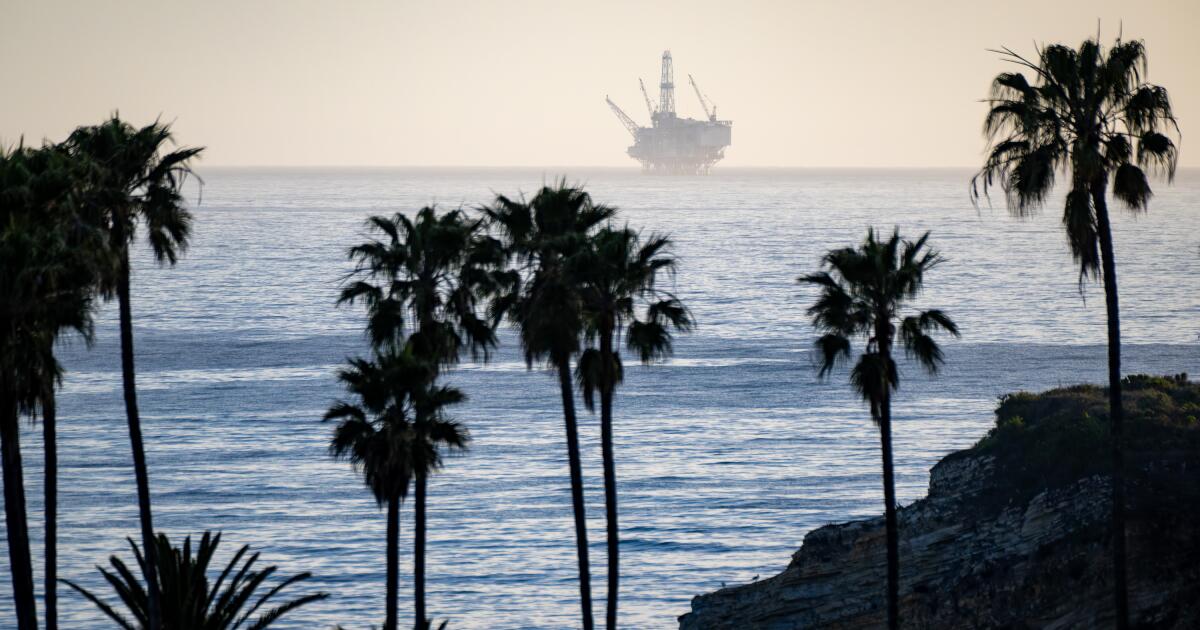Diving in an algae forest in Monterey Bay recently, I saw a seal of the 200 -pound port Tubby follow a diving partner, nibbling its fins. The diver, a graduate student, was using sponges to collect DNA samples from the ocean bottom. The curious seals, he told me, can be a nuisance. When the sponges are removed and places them on their collection network, sometimes they bite them, pierce the bags and spoil their samples.
Under the law of protection of marine mammals, which is approaching 50 yards for seals and dolphins, harassment is considered, but they are free to harass it, which seems fair given the centuries of whales and seals of seals that preceded a generational change in the way we see the world around us.
The change seized 1969, the year in which a mass oil spill covered the coast of Santa Barbara and the Cuyahoga river, in Cleveland, caught fire. These two events helped to provoke the first day of the Earth, in 1970, and the closure of the last Whaling Station of the United States in 1971. Protecting the environment from pollution and the loss of nature and wildlife quickly moved from a matter of protest to a social ethics such as Keystone's environmental legislation in the United States, it was approved around the same time, written by a Democratic Congress and signed by law by law. Republican, Richard Nixon.
These laws include the National Environmental Policy Law (1969), the Clean Air Law (1970), the Clean Water Law (1972) and the Law on the Protection of Marine Mammals (1972), which goes beyond the Law of Endangered Species (1973) to protect all marine mammals, not only threatened, for harassment, slaughter or capture by the citizens of the United States and in the United States and in the high seas.
All these “green” laws and more are under attacks by the Trump administration, their henchmen of the Congress and its corporate opponents for a long time of environmental protections, including the oil and gas industry. The false argument of Republicans to weaken the law of endangered species and the law of protection of marine mammals is that legislation has worked so well in the reconstruction of wildlife populations that it is time to loosen regulations for a better balance between nature and the human company. When it comes to populations of marine mammals, that premise is incorrect.
On July 22, at a meeting of the Subcommittee of Natural Resources of the House of Representatives, Republican representative Nick Begich de Alaska introduced a draft legislation that would reduce the Law on the Protection of Marine Mammals. Among other things, its proposal would limit the ability of the federal government to take measures against the “incidental taking”, the murder of whales, dolphins and seals for sound explosions due to oil exploration, ship strikes and boats or drowning as accidental capture (also known as Bycath's capture) in the fishing equipment. Begich complained that the protections of marine mammals interfere with “essential projects such as energy development, port construction and even fishing operations.”
The representative Jared Huffman (D-San Rafael), the classification member in the Chamber of Resources Committee, calls for a “death sentence” for marine mammals.
It is true that the law of marine mammals has been a success in many ways. Since its passage, no marine mammal has become extinct and some species have recovered dramatically. The number of northern elephant seals that migrate to the California beaches to mate and move grew from 10,000 in 1972 to approximately 125,000 today. There was an estimate of 11,000 gray whales on the west coast when the Marine Mammal Protection Law became law; For 2016, the population reached its maximum point by 27,000.
But not all species have prospered. Historically there were about 20,000 right whales of the North Atlantic on the east coast. They obtained their name because they were the “correct” whales for the harpoon: their bodies floated for easy recovery after they were killed. In 1972 they were reduced to an estimate of 350 individuals. After more than half a century of federal legal protection, the population is estimated in 370. They continue to suffer high ship strike rates, fishing tangles and other causes, including noise pollution and greater difficulty in finding prey in the warm -ups.
Florida, a combination of boat attacks and algae pollution threatened about 8,000-10,000 manaties. Population recovery (approximately 1,000 in 1979) It has been significant enough to get them out of the list of endangered species in 2017, but since the beginning of this year, almost 500 have died. Scientists would like to see them related, but at least they are still covered by the Marine Mammal Protection Law.
A study of 2022 in the Gulf of Mexico found that in the areas affected by the oil spill of the deep Water horizon BP 12 years before, the population of Delfines had decreased by 45% and that it could have been recovering 35 years. In the Arctic Ocean against Alaska, Loss of sea ice Threatening polar bears (marine mammals are considered), arch and beluga head whales, blackberries, ringed seals and harp seals.
On the west coast, the number of gray whales, a success story of the Law of Marine Mammals and now a warning history, has crashed by more than half in the last decade to less than 13,000, according to a recent report by the Oceanic and Atmospheric National Administration (NOAA, the main oceanic agency of the nation, is an endangered species to its own right to Trump's right). The decrease in dams, including small amphipods in shrimp, in the summer feed fields of the Arctic whales, probably caused by water heating, it is believed that he is an important taxpayer to its deaths of starvation and reduced birth rates.
The diving numbers of the whale are only a sign that climate change only makes the maintenance of the marine mammal law urgent. The generalized marine heat waves linked to a heater ocean are contributing to the loss of algae forests on marine otters and other marine mammals. Algae blooms in California, and for the first time, Alaska, supercharged by warmer waters and nutrient contamination, is causing the death of thousands of dolphins and marine lions.
What the Trump administration and its anti-regulation, supporters of anti-environmental protection do not recognize is that the loss of marine mammals is an indicator of the decline of our oceans and the natural world on which we depend and we are part. This time, saving whales will be about saving us.
David Helvarg is Executive Director of Blue Frontier, a group of oceanic policies. His next book, “Sea forest: the remarkable life and the future in danger of Kelp algae,” It is scheduled to be published in 2026.












